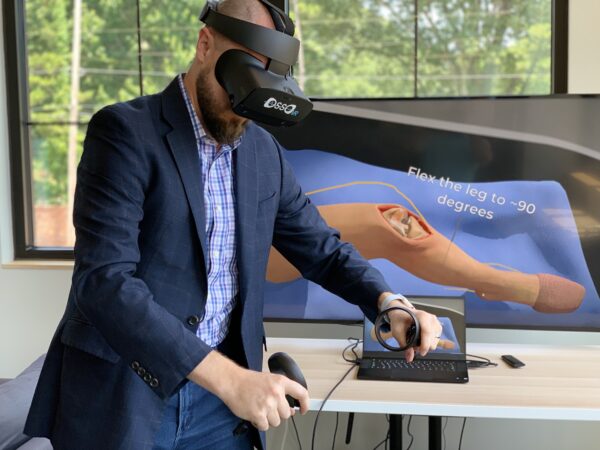The provider training institute of healthcare giant Johnson & Johnson is gearing up to put virtual reality headsets in the hands of surgeons who use its products.
The institute is partnering with startup Osso VR to distribute between 150 and 200 Oculus Quest headsets in the U.S. starting in April, with a goal of expanding the program worldwide over time, two J&J executives said in a phone interview.
“Before Oculus, this was really difficult to do because the equipment was large and bulky, and now we really have, I think, a much more portable solution that allows us to scale,” said Sandra Humbles, vice president of global education solutions for

The Power of One: Redefining Healthcare with an AI-Driven Unified Platform
In a landscape where complexity has long been the norm, the power of one lies not just in unification, but in intelligence and automation.
VR has been incorporated in training for a range of industries, including medicine, where studies support its promise. The technology comes from providers such as Osso, United Kingdom-based FundamentalVR and Surgical Theater, which has offices in Los Angeles and Cleveland.
The technology does improve surgical training, but it has some drawbacks, according to one pioneer in the field, Dr. Richard Satava, emeritus professor of surgery at the University of Washington in Seattle. Satava is a friend of Osso VR chairman Dr. Thomas Krummel but has no other relationships with the company or J&J.
Users must keep their heads still to prevent the VR display from moving, Satava said in a phone interview. And headsets can become uncomfortable over extended periods of time, say 30 minutes to an hour.
But, he said, he could see why J&J would want to invest in the technology. “They are on the leading edge at this moment in surgical training, so I would hope that they would collect data on the people that they’re training with this,” he said.
In fact, the opportunity to collect training performance data is one reason the company is partnering with Osso VR, founded in 2016 and based in Palo Alto, California. The company writes surgical training software that runs on the Oculus business platform.
“We wanted to prove that this makes a difference, so we really needed a partner who could measure and report on performance data,” said Humbles.
The Osso VR platform currently is used to train more than 1,000 surgeons a month, Dr. Justin Barad, Osso VR’s co-founder and CEO, said in a phone interview. The partnership with J&J represents a significant step up.
“The goal is to get VR in the hands of every single surgeon in every single hospital around the world,” Barad said.
J&J has confidence in VR technology based on its three years of experimentation in the field, said Humbles.
“What we don’t want to do is put them out there if it’s not making a difference to the learner surgeon,” she said. “It’s all about getting that data set back, and so far so good.”
The company, for example, has tested VR at its two dozen training institutes scattered around the world. The company knew it needed a more efficient way to deliver VR training to more surgeons, especially as the need grows worldwide for skilled surgeons, Humbles said.
J&J is starting off by putting VR headsets in the hands of its U.S. salesforce, which will dole them out to surgeons. The initial focus is on joint reconstruction. J&J makes a range of products used in knee, hip and shoulder replacement.
In addition to improved training, Humbles said, the VR technology will allow surgeons to train where they are instead of having to travel. Eventually, surgeons and support staff could use VR to train together from separate locations.
“That was another one of the factors that, I think, came into play when I was looking at the different VR developers,” said Tim Mauri, director of technology and innovation for global education solutions at J&J Medical Devices. “Osso was farther ahead in being able to offer a collaborative training environment.”
Correction: An earlier version of this story mistakenly stated that Johnson & Johnson was rolling out VR headsets to train surgeons. In fact it’s an initiative of the J&J Institute, which trains doctors and other healthcare providers.









